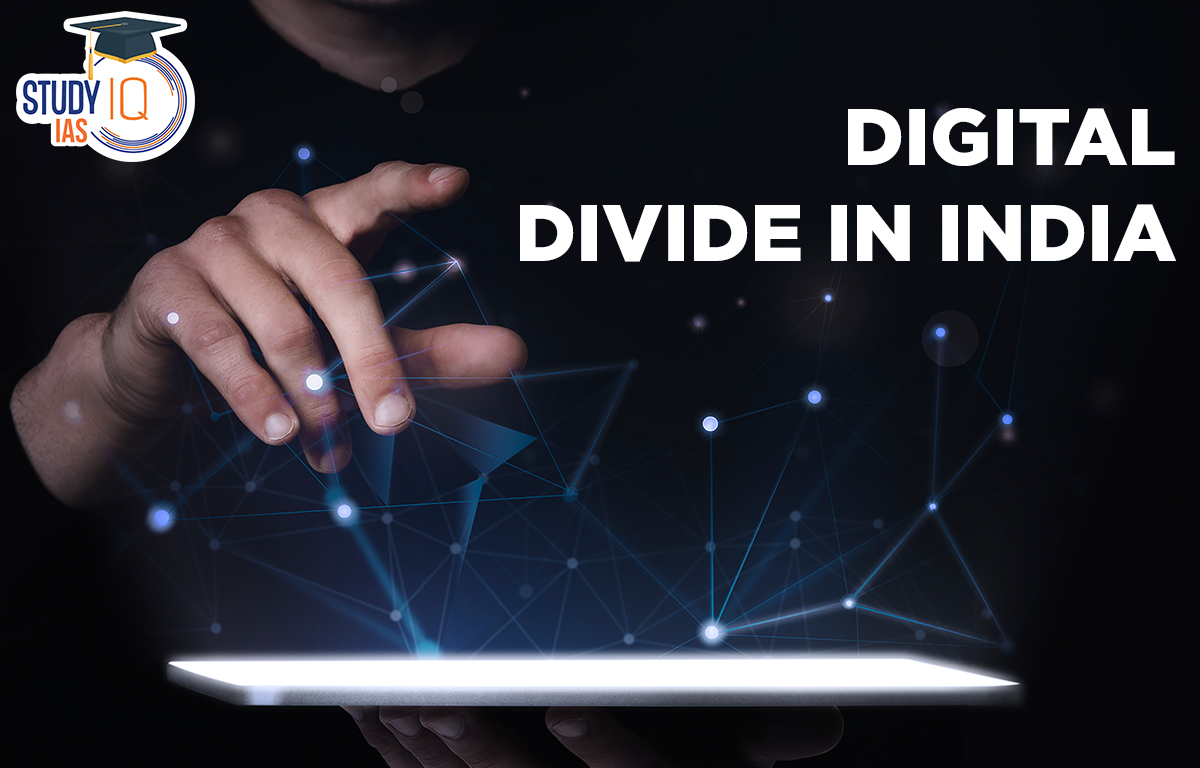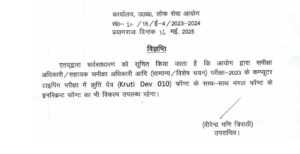Table of Contents
What is Digital Divide
Digital Divide can be defined as a gap between demographics and regions that have access to modern information and communications technology (ICT), and those that don’t or have restricted access.
Findings of Report
- Report underlines the role gender inequality plays in deepening the digital divide between men and women.
- Reach of digital technologies remains largely limited to male, urban, upper-caste, and upper-class individuals.
- Digital Divide in India due to poverty: Among the poorest 20% of Indian households, only 2.7% have access to a computer, while 8.9% have access to the internet.
- Digital Gender Inequality: India accounts for half the world’s gendered digital divide given that only a third of all internet users are women.
- In Asia-Pacific, India fares the worst with the widest gender gap of 40.4 per cent.
- Less than 32 per cent of women in India own a mobile phone – compared to over 60 per cent of men
- Women generally have handsets that cost less and are not as sophisticated as those used by men, and that their usage of digital services is usually limited phone calls and text messages.
- Role of Social Structure: Owning and using a digital device is a household decision taken by the man.
- Disparity based on education and employment: Person with a postgraduate degree or a PhD is 60 per cent more likely to have a phone than a person with no education,
- As per the NSS (2017-18), only about 9 per cent of the students who were enrolled in any course had access to a computer with internet and 25 percent of enrolled students had access to the internet through any kind of devices.
- Owning Computer: 39% of those with a post-graduate or a PhD degree have one, while with no education do not have any.
- Mobile phones: Only 11% of the uneducated respondents owned a handset, as compared to 76% of those with a post-graduate or a PhD degree.
- Oxfam India in 2020 noted that 75% of Indian parents and 84% of the teachers faced challenges with digital education.
- Employment status of Indians: It is linked to access to digital services, as 95% of the permanent salaried workers have phones, as compared to only 50% of the unemployed.
- Rural-Urban Divide: There are only 57.29 internet subscribers per 100 people in the country and that number is significantly lower in rural areas than urban.
- In rural areas internet subscribers per 100 are less than 34. It is over 101 in urban centres.
- Use of computer devices has decreased in rural areas: While 3 per cent of the rural population used to own a computer before the pandemic, the number slipped to just 1 per cent post-Covid.
- Inter-State Variation: Maharashtra has the highest internet penetration, followed by Goa and Kerala, while Bihar has the lowest, followed by Chhattisgarh and Jharkhand.
- Inter-Caste Variation: Likelihood of access to a computer is more for the General and OBC groups than for the SC and ST populations. The difference between the general category and ST is as high as seven to eight per cent between 2018 and 2021.
- 8 per cent of the general caste have access to a computer or a laptop, less than 1 per cent of the Scheduled Tribes (ST) and 2 per cent of the Scheduled Castes (SC) afford it.
- Inter-Religion Variation: Among all religions, Sikhs have highest likelihood of having a computer followed by Christians, Hindus and lastly Muslims.
- Digital Transaction: Likelihood of a digital payment by the richest 60 per cent is four times more than the poorest 40 per cent in India.
- Variation among Social Groups: In rural India, the tendency to use formal financial services is lowest for ST households, followed by SC households and OBC households.
- According to UN’s e-participation index (2022), which is a composite measure of three important dimensions of e-government, namely provision of online services, telecommunication connectivity and human capacity, India ranks 105 out of 193 nations.
- Digital push driven by the pandemic resulted in India experiencing the largest number of real-time digital transactions in 2021 at 48.6 billion.
Oxfam India
- It has been in India since 1951.
- Oxfam India is an autonomous Indian organization and has staff and board members from within India.
- Oxfam India is a member of the global confederation of 21 Oxfams across the world.
- Government of India has registered Oxfam India as a non-profit organization under Section 8 of the Indian Companies Act, 2013.
Report Recommendations
- It is imperative to address structural challenges in the universal provisioning of education, health, and financial inclusion.
- Government’s Role: Improving the income by setting a decent minimum living wage, easing the indirect tax burden on citizens and provisioning of universal health and education services.
- Ensuring internet availability: Service providers need to ensure its availability through community networks and public WiFi/ internet access points. Community networks are a subset of crowdsourced networks, designed to be open, free, and neutral, and often reliant on shared infrastructure as a common resource. They are usually built, used, and managed with a bottom-up approach by communities.
- To ensure universal access to internet connectivity, it has to be affordable for the masses.
- To drive down prices, the government can invest in digital infrastructure to not only make internet affordable, but also push for greater accessibility to smartphones.
- The government has to be a strong regulatory figure, ensuring that data and broadband services are not monopolized by private players.
- Government can lower taxes on computers and phones that are often prohibitively high.
- Conduct digital literacy camps, especially in rural India, to teach the use of technology in schools, and digitize panchayats and schools.
- Establish a responsive and accountable grievance redressal mechanism to handle EdTech and Healthtech related complaints by parents, children and other consumers.
- Need to consider low- or no-tech solutions.


 UPPSC RO ARO Exam Date 2025 Out: Typing ...
UPPSC RO ARO Exam Date 2025 Out: Typing ...
 Maharashtra Bill to Curb Urban Naxalism,...
Maharashtra Bill to Curb Urban Naxalism,...
 International Maize and Wheat Improvemen...
International Maize and Wheat Improvemen...





















